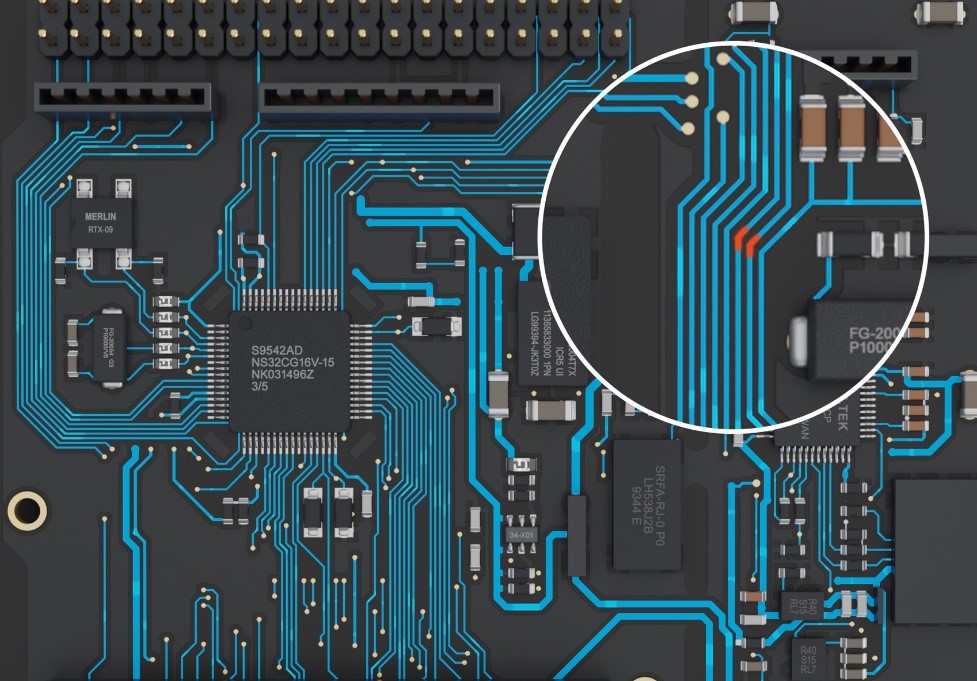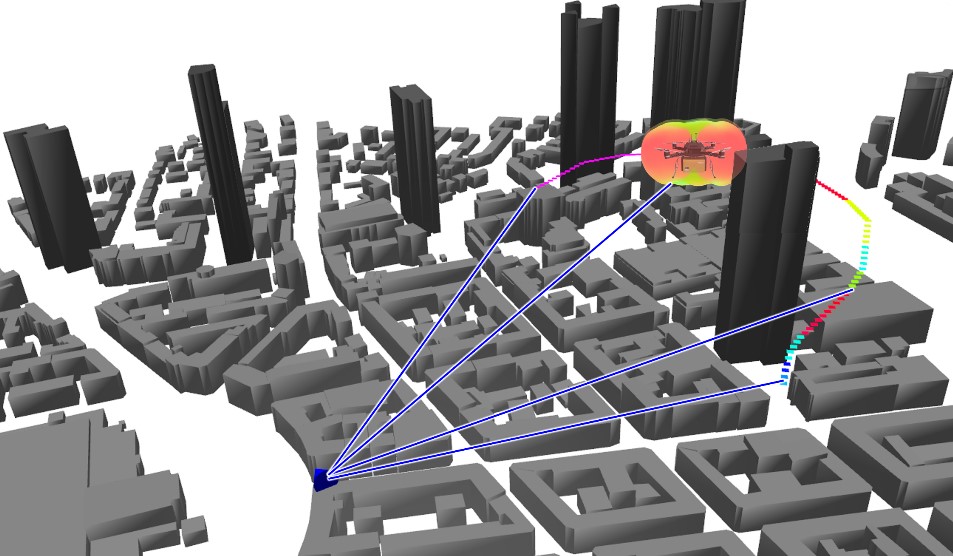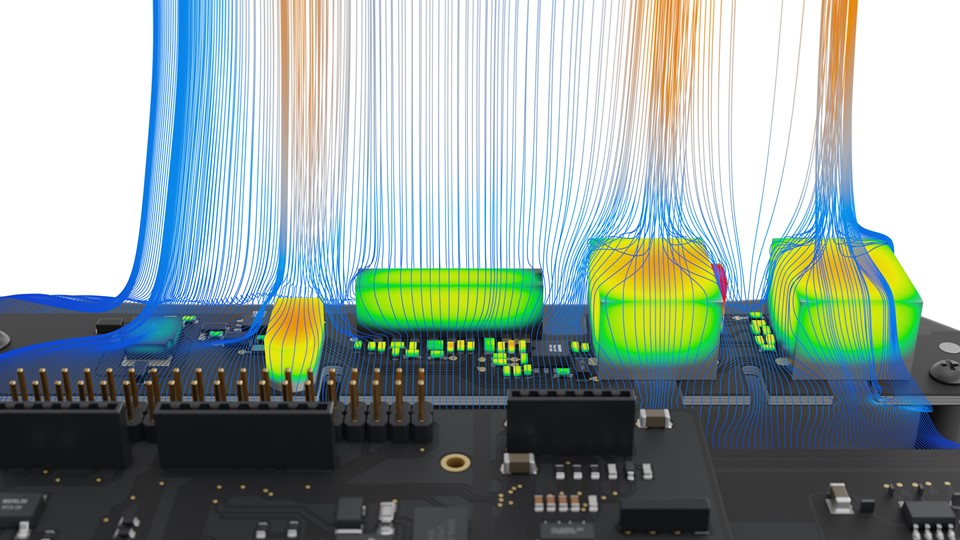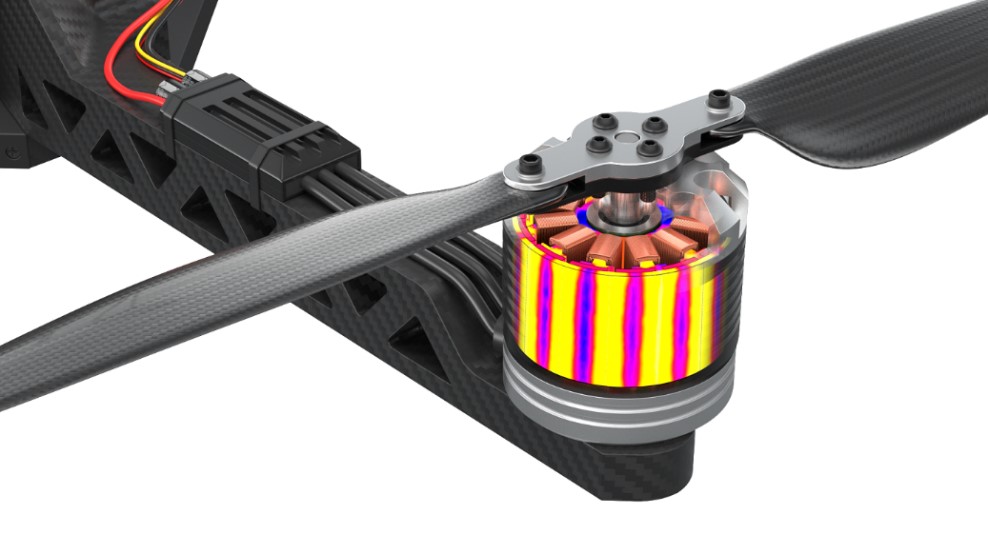The 7 Pillars of Electronic System Design
The ever-increasing pace of innovation in the electronics industry has pushed manufacturers to explore modern approaches to electronic system design to gain a competitive edge. Simulation-driven design holds great promise for delivering smarter products, shortening time to market, and enhancing product design, but it can be difficult to identify a clear roadmap to fully leverage the benefits of this digital approach to product development.
To begin implementing a more comprehensive simulation-driven approach, manufacturers should start with the fundamentals. There are seven key building blocks that make up the electronic system design process: electronics, electrical, mechanical, thermal, mechatronics, circuit, and code.

The 7 Pillars of Electronic System Design
Each of these technology pillars serve an important purpose in the form and function of modern electronics, and modeling and simulation tools within each discipline help streamline design and development workflows and reduce reliance on time-consuming physical validation testing. Equally important is ensuring that the data and analysis developed within each pillar can be readily shared across disciplines to drive a more effective holistic design.
Altair, a pioneer in engineering simulation technology for more than 30 years, brings a simulation-driven design philosophy to the electronics industry. Its new electronic system design toolset enables engineers to accelerate a variety of applications, from more efficient printed circuit board (PCB) design review, verification, analysis, and manufacture to the design of motors, sensors, and actuators with simulation. Let’s explore in brief how Altair technology can enhance development and validation processes across the seven pillars of electronic design.
Electronics

Delivering electronics that delight consumers requires more than just linking the ECAD and MCAD worlds, it requires physics analysis at the speed of design and collaboration across disciplines throughout development. Altair PollEx™ facilitates electronic design innovation while ensuring timing, performance, reliability, and compliance targets are met.
PollEx is an agile toolset that enables collaboration across component, subsystem, and system-level design, as well as across logical and physical design spaces. It offers solutions for PCB design review, verification, analysis, and even rule-based design for manufacturing, design for assembly, and design for electrical. It introduces a simulation-driven methodology for signal integrity, power integrity, and thermal for PCB design, and importantly, PollEx also integrates with all major ECAD and simulation tools, increasing efficiency and performance while fitting into existing tool chains with unsurpassed connectivity.
Discover how Samsung SDI was able to save $6 million a year using Altair solutions: Read the customer story.
Electrical and Connectivity

In an interconnected world, most devices are wireless with several antennas. Along with the high-frequency signals from WiFi and Bluetooth antennas, devices may also include transducers that emit low-frequency electromagnetic signals, all contributing to potential interference issues. PCBs are densely packed with components, leaving limited space for antennas. The performance of the antenna is also influenced by the adjacent components on the PCB.
Altair 5G simulation software also helps organizations accelerate their 5G radio coverage analysis and evaluation. Altair supports the planning and optimizing of 5G new radio networks, including industrial Internet of Things (IoT) and dedicated campus network applications, allowing for quick and easy simulation of countless scenarios. Altair’s 5G simulation tools uniquely combine antenna design with radio coverage and planning analysis and provides the broadest set of scenarios for 5G applications.
Leveraging PCB simulation software with electromagnetics analysis offers engineers greater insight into the electromagnetic performance of a product and helps avoid common issues like signal interference. Using PollEx with Altair’s electromagnetic tools helps users achieve improved connectivity and functionality through robust simulation driven product design and deployment strategies. Signal integrity, power integrity, EMC/ EMI, and thermal results can be combined with Altair’s other physics simulation tools to optimize performance through machine learning and to reduce modeling time for complex systems.
Mechanical
Electronic devices of all kinds must be designed to withstand the structural and operational requirements associated with normal use, drop, and misuse, all while balancing weight and cost considerations. Problems from harmonic and random vibration, solder fatigue, and drop impact can be particularly challenging as manufacturers strive to make their electronic devices smaller and more complex.
Designing with Altair SimLab™ allows CAE analysts to perform multiple physics simulations using a single shared model. This multiphysics solution enables users to automate modeling tasks and perform thermal, structural, and acoustics analysis within one unified platform. Rather than go through the tedious and error-prone process of preparing the model for each solver run individually, SimLab’s single model multi-attribute multiphysics process delivers optimization-ready results 40% faster than the traditional approach.
Thermal

Many factors are considered during a thermal analysis for electronics, from computational fluid dynamics (CFD) to the elimination of thermal effects of the PCB. Thermal flow analysis can be conducted on the design of a smart products to test fluid materials, heat load, inlet flow, fan cooling effects, and other key contributing variables.
For analyst-level users investigating challenging electronics cooling and design applications, Altair offers board and system-level thermal analysis solutions that are accessible directly within its multiphysics environment. This CFD-based tool is capable of solving problems involving conduction, natural and forced convection, radiation, and conjugate heat transfer, yet it is easy enough to use for a non-CFD expert, even for early-stage design feasibility studies.
Thermal analysis studies can be carried out at every level of the electronics design. Altair’s tools can simulate the thermal behavior of the semiconductor and PCB level to the assembly, wiring and module levels, all the way to the full system-level operation. This software is especially adept at handling applications such as electronic enclosure systems, forced cooling systems, busbar systems with circuits, and PCB cooling.
Mechatronics

Smart sensors and actuators are strategic components for smart product monitoring and control. No matter whether data is processed at the device level or in the cloud, sensors and actuators have to be accurate, reactive, and energy efficient in order to deliver the performance needed for smart systems.
On top of performance optimization, sensors, actuators, and motors also provide challenges for architecture integration. They often need to be miniaturized, and when possible, integrated into the PCB without sacrificing reliability or adding to manufacturing costs. Sensor-PCB integration can be a source of electromagnetic interference, and motors and actuators will also generate heat. The presence of steel, magnets, and copper will impact product weight and its distribution within the device, which needs to be considered in the simulation of mechanical and thermal performance.
System integration can also pose a challenge for engineers, who must connect a variety of physics and mechatronic properties to understand system-level performance. Altair’s model-based development (MBD) tools can help drive faster assessment of system performance by enabling the flexible configuration of sensor systems and simulating the sub-systems and control strategies for each function of the device. Simulating complex products as systems-of-systems allows smart product designers to explore how sensor resolution, accuracy, and precision, as well as the thermal, mechanical, electronic, and electromagnetic output of actuators, may influence the performance of the system as a whole. MBD enables easier integration into a global system and helps to improve energy management by identifying potential energy flow issues and various types of energy loss.
Using Altair’s electromagnetic simulation technology, device designers can prioritize these key attributes and design, simulate, and optimize the performance of sensor electronics or actuators. EM results can even be used within design of experiments (DoE) software for performance optimization.
Circuit

Altair offers electronic circuit simulation tools in an open integration platform for modeling, simulating, and optimizing multi-disciplinary systems-of-systems. The simulation is based on SPICE syntax and component equations, which allow co-simulation of system level models with SPICE accurate electronic circuit descriptions and ensures the circuit is functional before fabrication.
Circuit simulation plays a strategic role in the schematic capture phase of EDA workflows. The enhanced proprietary version of SPICE, based on the open-source industry standard, with access to the library of digital component suppliers, delivers a more interactive schematic in which easy changes of component values, tolerances, frequency response or time periods enable an accurate verification of the electronic circuit performance.
Code

Visual environment software is essential to the smart product development process, allowing users to avoid the tedious and sometimes error-prone process of manually writing code for embedded systems. Instead, software can automatically generate code directly from your system diagram.
To develop complex embedded systems like sensor and actuator controls, vision systems, and IoT devices, design engineers need software for model-based firmware development. Altair’s tools let you design, analyze, and simulate your embedded system using block diagrams and state charts, then automatically generate compact and optimized code to run on an extensive selection of microcontrollers from Texas Instruments™, STMicroelectronics®, Arduino®, Raspberry Pi™, and others. Hardware-in-the-loop testing is fully supported using a high-speed bidirectional communication link for data collection and real-time tuning.
Altair’s solution enables engineers to collaborate on all aspects of logical, physical, thermal, electrical, and mechanical design, from concept to manufacturing, and access all of these tools under one common licensing model. This open-architecture platform enables companies to integrate and collaborate across multiple design disciplines, driving better decision-making through simulation. This ESD solution is backboned and supported by Altair’s high-performance computing and cloud environment, which democratize access to scalable computing resources and further enables dynamic, collaborative access to simulation and data analytics technology across teams and organizations.
To learn more about Altair’s comprehensive, end-to-end electronic system design, analysis, verification, and manufacturing toolset, download the Altair ESD eGuide.

